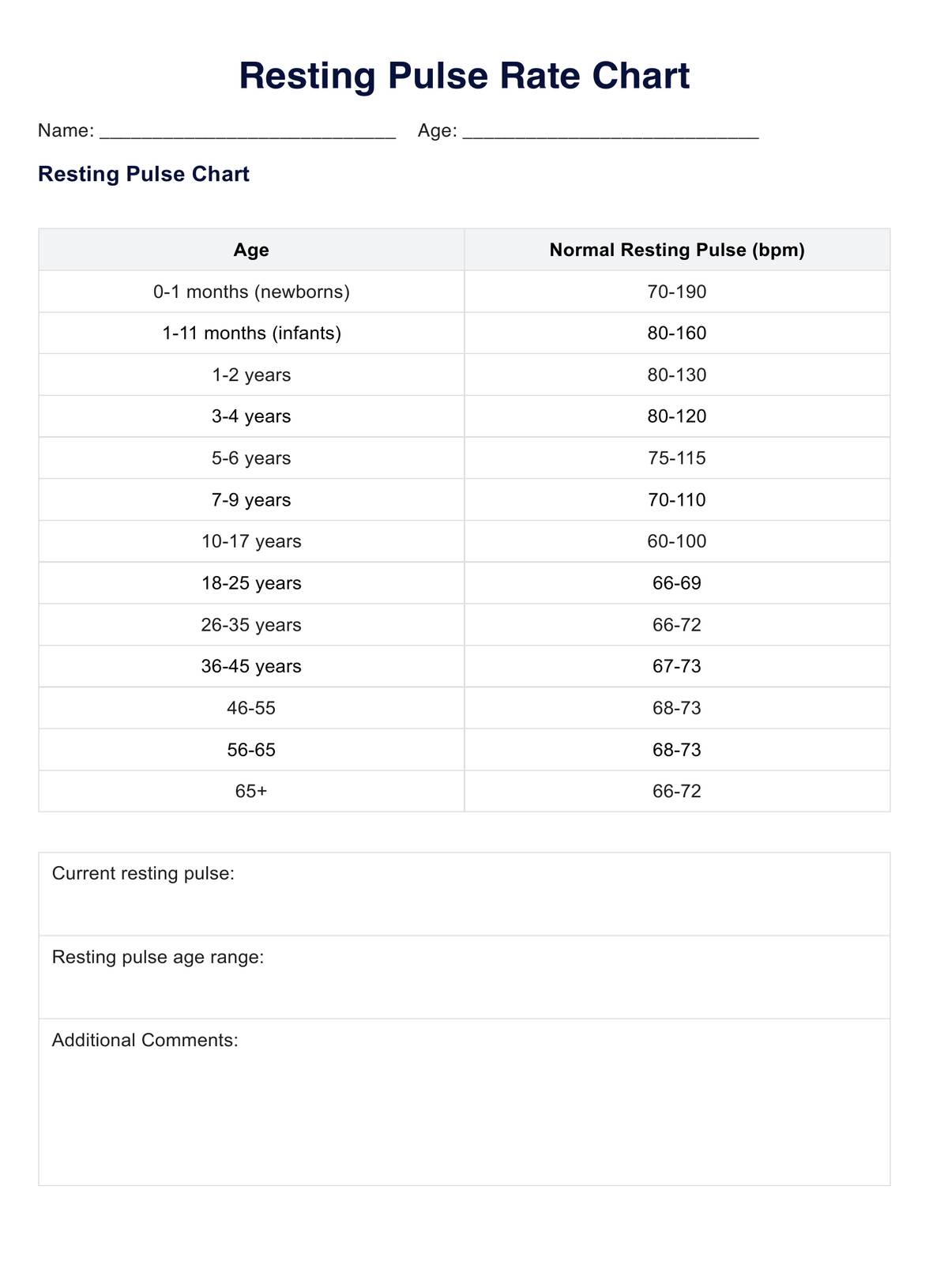The resting pulse rate chart can be requested by individuals or health providers seeking to monitor resting pulse or identify whether the heart is functioning well according to the age ranges.

Using our Resting Pulse Rate Chart, you can learn more about the inner workings of the heart and what this may mean for your client’s health.
The resting pulse rate chart can be requested by individuals or health providers seeking to monitor resting pulse or identify whether the heart is functioning well according to the age ranges.
Although these charts can be used in various scenarios, they are most typically applied when health providers are completing measurement or screening procedures related to heart functioning. This may include during surgery or conducting routine health checks.
The charts are used as a reference tool to see whether an individual’s resting pulse is within the normal range for their age. If within the range, it usually signals good health and heart functioning. If outside of the normal ranges, it may signal high, low, or irregular rhythms, which may require further diagnostic procedures by a health professional.
EHR and practice management software
*No credit card required
Free
$0/usd
Unlimited clients
Telehealth
1GB of storage
Client portal text
Automated billing and online payments